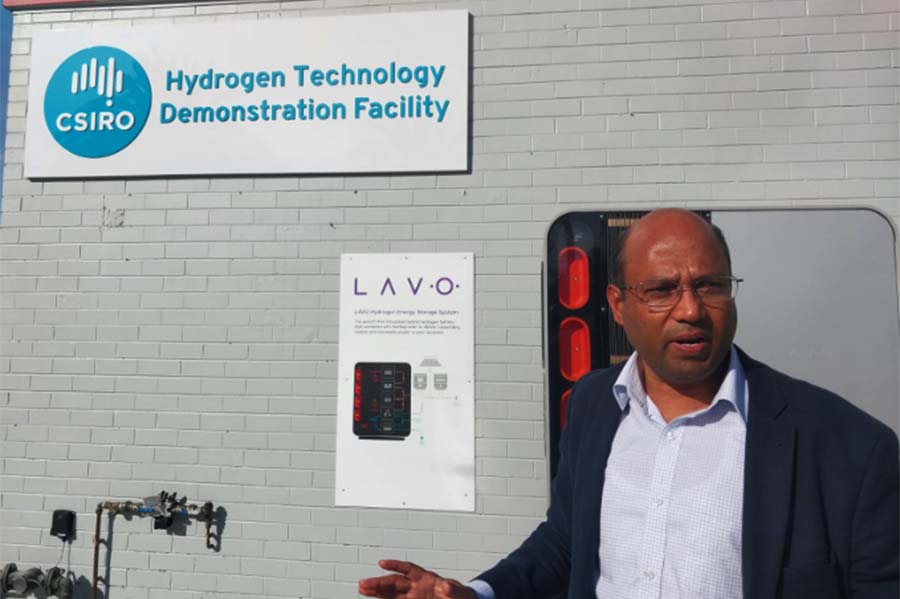Bangladesh needs to develop a National Hydrogen Strategy, scientist says

Published :
Updated :

Bangladesh needs to have a “National Hydrogen Strategy” to explore clean hydrogen potential and enhance its relations with those countries which are advanced in this particular area, says a Bangladesh-origin scientist based in Australia.
“I think Bangladesh should immediately have a hydrogen strategy,” principal scientist at CSIRO, an Australian Government agency responsible for scientific research, Dr Nawshad Haque said at his office in Melbourne.
He said globally a good number of countries – at least over 90 countries – are working on hydrogen strategy and many of them like Australia have formal hydrogen strategy, reports UNB.
Dr Nawshad said this strategy depends on the country’s energy demand; and export, import and use of the energy.
“We need to keep ourselves prepared to enhance collaboration and cooperation among engineers, universities, and industries. There could be a game changing potential for the hydrogen economy,” he said.
Dr Nawshad laid emphasis on using science for “diplomacy and development” and said developing countries need exposure of technological research, development and demonstration on clean energy.
“Scientific cooperation can be an excellent tool for capacity and economic development. Australian scientists and experts can be consulted through diplomatic channels for “National Hydrogen Strategy” development in Bangladesh,” he said.
Scientists, engineers, professionals and journalists from Bangladesh can be sent to Australia for learning about clean technologies and for adoption in the country, said the scientist.
With no carbon emissions and over 3 times more energy density than fossil fuels, renewable hydrogen has the potential to end the fossil fuel dependency in the future. Yet today 96 per cent of hydrogen production is through fossil fuels and is not sustainable.
As hydrogen offers a low-emissions pathway with broad potential to help decarbonise the energy, transport and industrial sectors, Dr Nawshad said Bangladesh needs to enhance its capability and capacity by training people, looking at technologies and finding ways for technology transfer.
The scientist who joined CSIRO Energy in 2018 and contributed to develop a number of novel technologies and flowsheets for 'Mine to Metal' production at CSIRO said cooperation and collaboration are essential as one country’s solution does not work exactly another country as there are factors like energy demand, energy use pattern, consumption, export and import.
Responding to a question about renewable energy solutions for Bangladesh, he said for example, Bangladesh’s battery-run three- wheelers can be turned hydrogen-run but it needs to be analyzed.
But, he added, at a certain point of time technology will mature and things will become easier when big companies come forward.
The Hydrogen Industry Mission will help build Australia’s clean hydrogen industry by scaling demand and driving down hydrogen cost to under $2 per kilogram to deliver a secure and resilient energy system and support our transition to a low emissions future.
It is estimated that a clean hydrogen industry will create more than 8,000 jobs, generate $11 billion a year in GDP, and result in avoided greenhouse gas emissions equivalent to a third of Australia’s current fossil fuel emissions by 2050.
The scientist laid emphasis on having a proper mapping for wind energy in Bangladesh.
As Bangladesh has an increased maritime area, Bangladesh can explore offshore wind energy as part of the blue economy, Dr Nawshad said.
Offshore wind power or offshore wind energy is the energy taken from the force of the winds out at sea, transformed into electricity and supplied into the electricity network onshore.
He said residential and industrial solar energy has accelerated very quickly in Australia and Bangladesh can also explore further in this area as the world is moving fast on clean energy issues.
Responding to a question, he said Bangladesh can think of floating solar and upazila health complexes’ rooftops can be used.
“We are not saying we have to change things overnight but we need to remain prepared,” Dr Nawshad said.
He mentioned that India and Australia have high-level engagement in the clean energy area and Bangladesh and Australia have the similar opportunity to do the same.
“Bangladesh can also think of the Bangladesh-Australia Council to have a government to government network,” Dr Nawshad said.
He said the whole world is heading towards hydrogen and it will be cheaper gradually. “I can't give you electricity (due to long distance). I can convert electricity to Hydrogen and send it to you.”
Hydrogen can be used in fuel cells to generate electricity, or power and heat. Today, hydrogen is most commonly used in petroleum refining and fertilizer production, while transportation and utilities are emerging markets.
Recently, Australia sent the world’s first shipment of liquified hydrogen to Japan. It is a major milestone in the A$500 million Hydrogen Energy Supply Chain (HESC) pilot project. The project is the first in the world to extract, liquefy and transport liquid hydrogen by sea to an international market.


 For all latest news, follow The Financial Express Google News channel.
For all latest news, follow The Financial Express Google News channel.